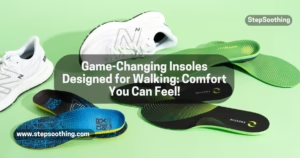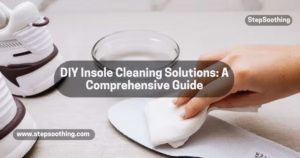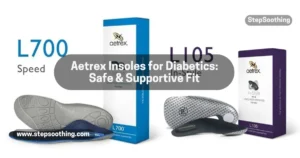Aetrex insoles are well-known for their orthotic grade support, comfort, and ability to relieve common foot issues like plantar fasciitis, arch pain, and metatarsalgia. Designed with memory foam, antimicrobial materials, and advanced biomechanical alignment, they offer more than just cushioning—they support the entire kinetic chain from the foot up to the hip.
A common question many users have is: Can Aetrex insoles be moved between different pairs of shoes? For people juggling sneakers, work boots, and dress shoes, the ability to reuse insoles across footwear types can mean better value, consistent comfort, and customization for every activity.
Can Aetrex Insoles Fit in Different Shoes Easily?
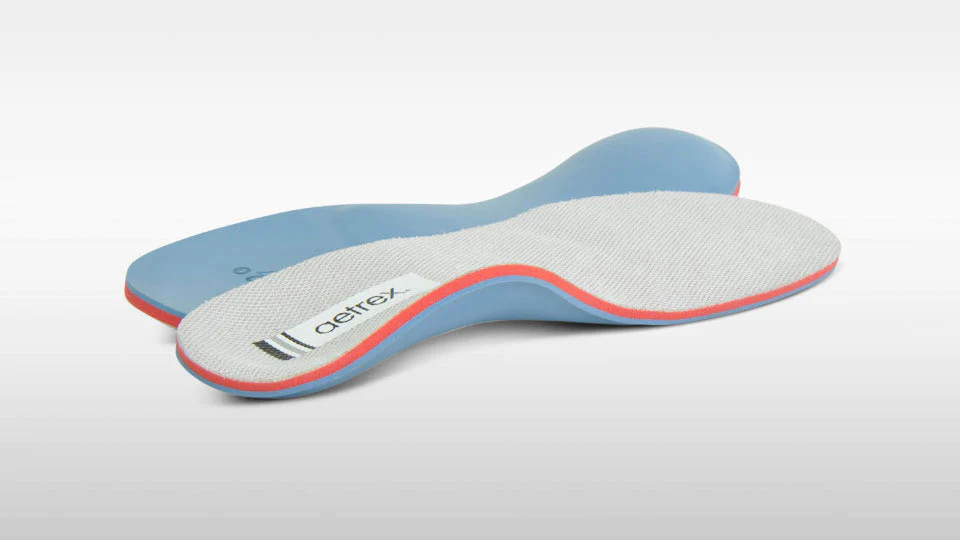
Understanding Aetrex Insoles
Each pair of Aetrex insoles comes with built-in arch supports, memory foam cushioning, and a top cover infused with CopperGuard® an antimicrobial layer that helps keep the foot environment clean and odor free. They also help align the body, reduce pronation, and distribute weight to ease pressure points.
Aetrex offers multiple insole types: from dress and casual options to athletic, work specific, and even custom orthotics designed using 3D foot scanning technology. Most off the shelf models are trim to fit, making them suitable for a range of shoe styles.
Check out how to keep Aetrex insoles fresh and odor-free
Are Aetrex Insoles Designed for Interchangeability?
Many Aetrex insoles are designed with flexibility in mind. Their trim to fit design and dual density foam layers mean they can move between shoes, provided the shoes have a removable insole and enough volume.
Models like the Lynco L400 series and L800 for athletes are commonly used in sneakers, walking shoes, and boots. However, custom molded orthotics or style specific insoles, such as those made for high heels or low profile dress shoes, may not transfer well due to their tailored shape.
Shoe Compatibility Considerations
Swapping insoles between running shoes, dress shoes, and work boots can be tricky. Sneakers tend to offer enough room and flexibility, making them ideal for transfers. On the other hand, dress shoes or sandals often have tight interiors or non-removable insoles, which can limit compatibility.
Consider the volume, shape, and whether the original insole is removable. Shoes with a short rear, tight toe box, or narrow heel cup may compress or distort the Aetrex insole, leading to numbness, blisters, or reduced shock absorption.
Tips for Transferring Aetrex Insoles Between Shoes
How to Transfer Safely
- Remove the original insole from your new shoe completely.
- Insert the Aetrex insole and test for fit.
- If necessary, use the trim lines to custom cut the insole using sharp scissors.
- Ensure the insole sits flat and the heel aligns correctly in the shoe bed.
Preserve the Shape
Avoid over-flexing or cramming insoles into shoes with incompatible shapes. Always allow insoles to air out, and rotate usage if you switch between shoes frequently to help them last longer.
Wondering how long Aetrex insoles last?
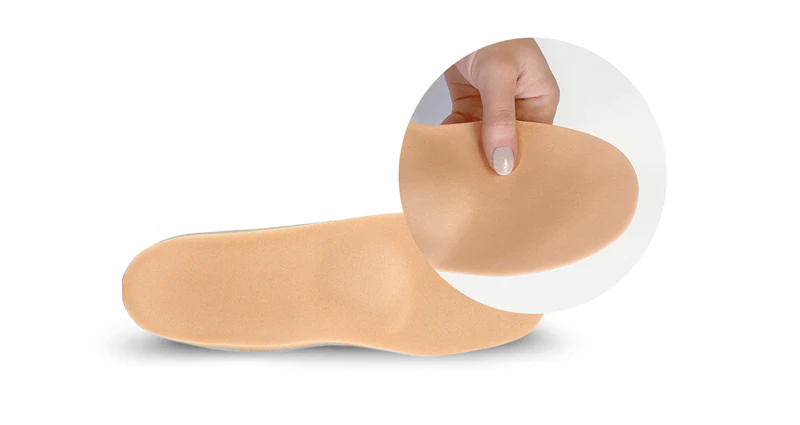
When Not to Transfer Aetrex Insoles
Certain footwear, like heels, minimalist shoes, or shoes with non-removable footbeds, aren’t designed for third-party inserts. Also, avoid transferring custom orthotics, as they’re made for a specific foot structure, gait, and pressure point pattern.
In these cases, transferring could reduce effectiveness and even create new biomechanical issues. If a shoe doesn’t fit properly with the insole, it’s better to get a dedicated pair or use a different Aetrex model.
Real User Experiences and Feedback
Users from cities like Austin, Denver, and New Jersey have shared positive results transferring Aetrex insoles between shoes. Many found that their orthotic inserts delivered consistent support whether used in boots, tennis shoes, or work footwear.
However, some users noted that after several months, their insoles began to compress in tighter shoes, affecting comfort. A few also reported needing to trim multiple times, which may alter the structural integrity of the insert.
Expert Recommendations
Professional Advice
Podiatrists, physical therapists, and certified Aetrex fitters recommend using the same model across compatible footwear to maintain alignment and foot support. For those needing insoles in different types of shoes, it’s often worth purchasing a second pair for maximum performance.
When in doubt, visit a local Aetrex retailer with a 3D foot scanner. They can analyze your pressure points and recommend the right insole model for all your footwear needs.
👣 Explore Aetrex insoles for diabetes and chronic foot conditions
Dr. Janine Ferrigno-Taddeo recommend Aetrex Orthotics to all her patients.
“Aetrex offers a variety of orthotic products designed to address various foot conditions, including plantar fasciitis, flat feet, overpronation, and other biomechanical issues. Their unique designs are based on the data and learnings from their 3D foot scans for a better, anatomical fit.”
Conclusion
Yes, Aetrex insoles can be transferred between different pairs of shoes—especially when the shoes allow for volume, trim-to-fit, and proper alignment. Just make sure to understand your shoe’s structure, and choose an insole model suited for flexible use.
Done right, transferring Aetrex insoles means more value, better comfort, and support for every step—whether you’re heading to work, walking the dog, or training for a race.
People Also Asked
Do Aetrex Insoles lose effectiveness when moved frequently?
Not necessarily, but constant reshaping or forceful placement can reduce cushioning and cause wear. Rotate pairs to preserve structure.
Can Aetrex Insoles be trimmed more than once?
Yes, but trimming beyond the guide lines may cause the insole to lose stability and fit. Stick to single-trim adjustments when possible.
How do I know if they fit well in a new Shoe?
They should sit flat without bunching, cover the heel and arch, and feel balanced during walking. If your toe box feels tight or your heel slips, the insole may not be compatible.

